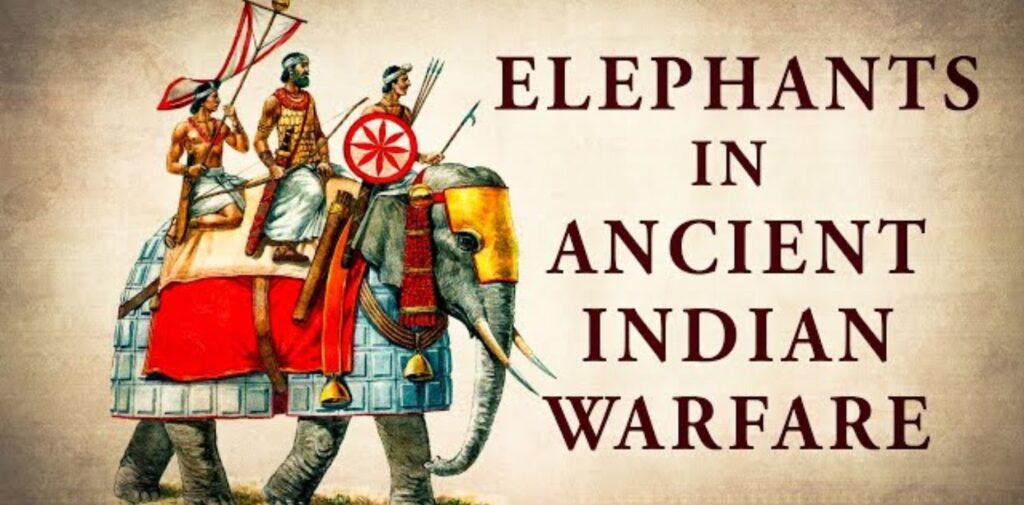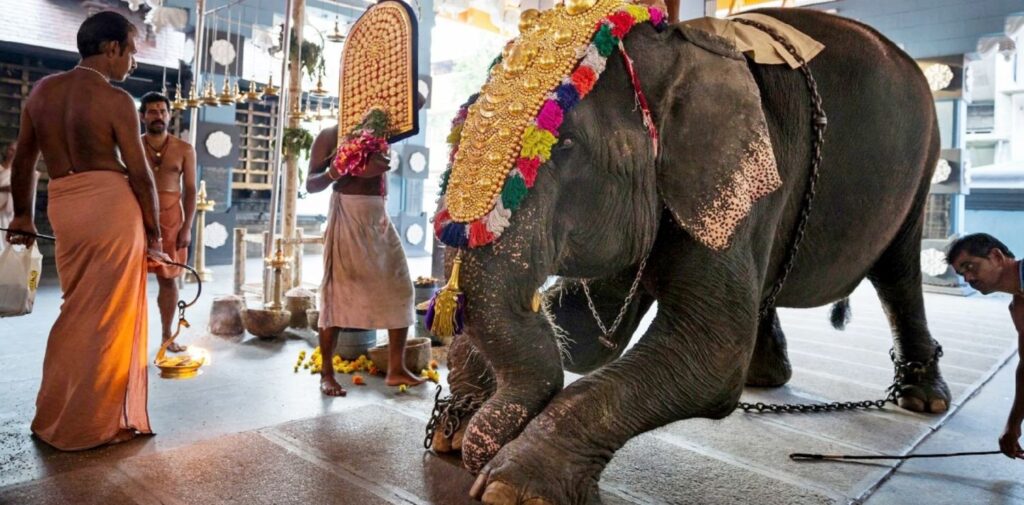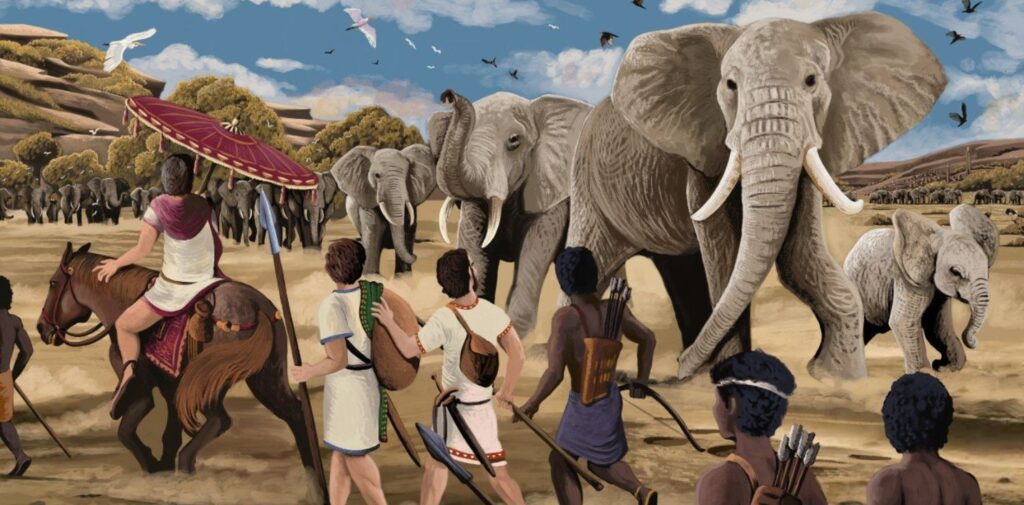Elephants in Ancient Indian are majestic creatures that have played an important role in Indian history for thousands of years. They are not only seen as symbols of strength and wisdom, but they have also been crucial in both warfare and culture. In ancient India, Elephants in Ancient Indian were used in battles and were deeply connected with the traditions, religion, and art of the country. Their involvement in warfare helped shape India’s military strategies, and their presence in culture made them symbols of power and grace.
Elephants in Ancient Indian Warfare
Role of Elephants was like tanks in ancient Indian warfare. They were huge, strong, and could carry soldiers, weapons, and armor. This made them very useful in battles. Ancient Indian kings and rulers often used elephants in their armies because they were powerful and intimidating. The role of elephants in warfare was so important that they became a key part of the military strategy.
When elephants went into battle, they would carry elephant soldiers, archers, or even large weapons like huge bows, spears, and swords. The soldiers sitting on the elephants would aim these weapons at the enemy from above, making it harder for the enemy soldiers to reach them. Elephants could trample over enemy soldiers, causing a lot of damage, and their size made it difficult for the enemy to fight them.
One of the most famous uses of elephants in warfare was in India’s great battles. The Maurya Empire, one of the largest and most powerful empires in ancient India, used elephants extensively in battles. King Chandragupta Maurya and his grandson Ashoka are famous for their use of elephants in their armies.
Another well-known battle where elephants played a key role was the Battle of the Kalinga. During this battle, Emperor Ashoka, who was fighting against the kingdom of Kalinga, used elephants to lead his troops. The elephants were a symbol of power and fear for the enemy. The Kalinga War is particularly famous because it was so brutal, and after the war, Ashoka embraced Buddhism and gave up violence.

The Training and Care of Elephants
Training Elephants in Ancient Indian for war was a serious and careful process. Elephants in Ancient Indian were trained from a very young age to carry soldiers and weapons. They had to be strong, brave, and able to follow commands. The trainers used special techniques to make sure the elephants were calm and could fight well in battle. The elephants were trained to listen to the commands of their mahouts (the elephant drivers) and to charge into battle without getting scared or distracted.
Elephants in Ancient Indian were also trained to work together in groups. In a battle, it was common to see many elephants working together as part of a larger army. They would march in lines, sometimes forming a wall of elephants to protect the soldiers or to attack the enemy. The careful training made sure the elephants were not only useful in battle but also safe to work with.
The elephants were well cared for, as they were valuable members of the army. They were given special food and taken care of to ensure they were strong and healthy for battle. After battles, the elephants would be treated with respect, and many were given rest and care.

Elephants in Ancient Indian Culture and Religion
Beyond warfare, elephants have been deeply connected with India’s culture and religion. Elephants are seen as symbols of wisdom, power, and good luck. In fact, one of the most important gods in Hinduism, Lord Ganesha, is depicted with the head of an elephant. Ganesha is known as the remover of obstacles and the god of wisdom and prosperity. The image of Ganesha is one of the most recognized symbols in India and around the world.
The elephant-headed god, Ganesha, has a rich mythology behind him. According to legend, Ganesha was created by the goddess Parvati, who made him from clay. When Lord Shiva, Parvati’s husband, didn’t recognize him and accidentally cut off his head, he replaced it with the head of an elephant to save him. Since then, Ganesha has been worshipped by millions of people across India.
Elephants are also important in Buddhism and Jainism. In Buddhism, the white elephant is considered sacred and is believed to have been the symbol of Buddha’s mother before he was born. In Jainism, elephants are often depicted in religious art and sculptures, symbolizing the strength of character and wisdom.
Elephants are also celebrated during various festivals in India. One of the most famous is the Ganesh Chaturthi festival, where people celebrate Lord Ganesha by making statues of him, singing songs, and offering prayers. During this festival, many cities, especially Mumbai, have grand processions where large statues of Lord Ganesha are carried on vehicles, sometimes even in the form of elephants, as a sign of respect to the deity.
Elephants in Royal Courts and Ceremonies
In addition to being used in warfare, elephants were often kept by kings and emperors for ceremonial purposes. Elephants were a symbol of royal power. Kings would often keep large, decorated elephants in their royal courts. These elephants were used for parades, festivals, and processions. The sight of a beautifully decorated elephant was a sign of the king’s wealth, power, and grandeur.
Elephants were also used in royal ceremonies. For example, they were sometimes used to carry the king or queen during important events. The elephants would be decorated with gold, silver, and colorful fabrics, and their tusks would be polished. This was done to show the wealth and importance of the ruler. Elephants were often considered part of the royal family and treated with great care and respect.
In some royal families, the number of elephants owned by a king or emperor was a symbol of how powerful and rich he was. Kings would often give away elephants as gifts to other kings, or they would exchange elephants as part of treaties or alliances.

The Decline of Elephants in Warfare
As time passed and new weapons and technologies were developed, the role of elephants in warfare began to decline. By the time of the medieval period, firearms and cannons became more important in battles. The use of elephants in warfare became less effective as guns and other weapons could defeat them easily. However, elephants remained important in Indian culture and religion even after their role in warfare faded.
Today, elephants are not used in warfare, but they are still an important part of Indian heritage. They are respected and loved, and their image can be seen in festivals, temples, and artwork.
Conclusion: Elephants in India’s History and Heritage
Elephants have played a key role in both warfare and culture in ancient India. In battles, they were used as powerful weapons, carrying soldiers into the heart of the enemy’s forces. They were trained with great care and respect and helped many kings and empires win important wars.
Beyond warfare, elephants have been deeply connected with Indian culture, religion, and ceremonies. From the worship of Lord Ganesha to their presence in royal processions, elephants have been symbols of strength, wisdom, and prosperity in India.
Even though elephants are no longer used in warfare today, they continue to be an important symbol in Indian culture. They remind us of India’s rich history and the deep bond between humans and nature. The elephant remains a beloved and respected animal in India, a symbol of both spiritual power and physical strength.




